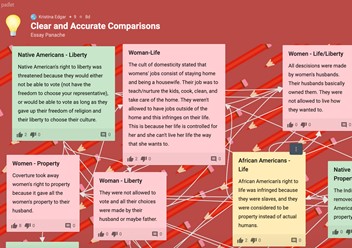Real-time polling, original instructional videos, virtual conferences, and live on-screen annotation are just a few new skills teacher Jonathan Delgado is adding to his teaching toolkit this school year.
When Delgado begins his high school Spanish class at The Village School each day, he’s learning to manage many new things simultaneously in this year’s hybrid learning environment. With some students on campus and others at home, his classroom looks a lot different. He starts the Zoom meeting and welcomes students as they enter his classroom, whether it’s with a physical elbow bump or a wave on the monitor. He then shares his computer screen so everyone has access to the instructions as he splits students into small groups and fields questions from raised hands and in the online chat box.
Regardless of how your school responds to COVID-19, teachers and students are at the heart of it all. One of the most valuable lessons we can learn during these times is how we think beyond a traditional education to transform learning. What are some ways teachers are ensuring meaningful student engagement in this new era of digital and mobile learning?
Empowering students in virtual & blended classrooms
High school teachers like Jonathan are transforming lesson plans into collaborative learning environments to enhance the virtual and blended school experience. Jonathan learned that leveraging the power of technology and available resources drove him to level-up his blended learning. Tools like Rise Articulate, an e-learning authoring tool, create responsive courses for any device and support teacher autonomy plus live on-screen annotation during lesson delivery.
To challenge his students, Delgado creates engaging instructional videos igniting curiosity and motivating digital creativity. This new level of engagement results in a higher level of quality content, enhanced creativity, and an empowered voice. Tools like Sutori are multi-purpose and used for project instruction, as well as student cumulative products. By providing students with interdisciplinary platforms where they link concepts and ideas, learning becomes more diverse and meaningful.
Collaboration and connections in virtual and blended classrooms
Blended learning gives teachers a chance to strengthen differentiation and meet the needs of each student while diversifying their skill sets in terms of what they can offer a class. Younger students at the middle school and elementary levels begin to investigate the possibilities available to them through these new and exciting ways of learning.
For example, middle school teachers focus on student engagement and find ways to stay connected to students in a virtual environment. Kristy Edgar, an eighth-grade history teacher at The Village School, uses tools like Padlet to foster student conversations for project brainstorming, and Poll Everywhere to check understanding with at-home and in-person students in real time.
In the elementary classroom, Leah Fischer, a third-grade teacher, guides her students to make observations via lessons featuring her as the subject. This keeps the teacher-student connection strong, even with those who are virtual. Fischer finds her students consistently stepping up to new challenges and eager to make connections.
Maximizing on educational technology
At Village, IT Director Jason Kariel helps us define a common set of digital tools to meet needs in this new learning environment. Some digital tools did not work as expected, yet we made quick decisions on replacements that match our evolving requirements. Alternately, some new processes have been so well received they will likely replace our traditional tools, such as virtual parent-teacher conferences.
With more than 300 million students worldwide continuously having their education disrupted by the pandemic, teachers must find new ways to strengthen student engagement, collaboration and connection. Many schools are still adjusting and adapting to this type of disruption, but we now have the ability and resources to continue education even when schools close. As teachers and educators, we understand that no matter what, learning must continue in order to empower and challenge our students. With an even greater emphasis on digital and mobile learning, we can do that.
- Sailing through adversity: 4 Olympic-sized lessons in educational leadership - November 19, 2024
- Real-life work experiences: The unseen curriculum for high school success - November 18, 2024
- A CTE teacher shares 8 strategies to increase student engagement - November 15, 2024




